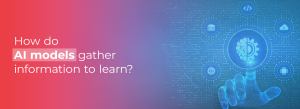How to Use AI Models for Sentiment Analysis and Behavior Detection?
You must’ve noticed that companies manage to analyze a number of user reviews and feedback in a short duration of time. All this is possible due to artificial intelligence and the integration of AI for sentiment analysis and behavior detection. Well, it is quite clear that manually going through and evaluating reviews and feedback is quite a tedious process, so using AI for the same solves the purpose.
If you want to integrate AI models into your business and want to source quality datasets for training your models then you must check out Macgence. Log on to www.macgence.com today!
What is Manual Sentiment Analysis?
The manual process is solely dependent on humans to extract facts and information from text data for sentiment analysis and behavior detection. A human analyst has to read and assess a piece of content as positive, negative, or neutral in the process of manual sentiment analysis. They might even assign numerical scores or grades based on the sentiment intensity.
This is a time-consuming process and thus comes with various challenges and limitations. A lot of time is spent analyzing huge volumes of data thus making it impractical for organizations having a large amount of user feedback data. As human analysts perform the process of sentiment analysis and behavior detection, the possibility of human bias or some general errors is always because it is a subjective matter.
How to Use AI For Sentiment Analysis
Since the manual analysis of extensive text data is quite impractical, let’s discuss the ways to use AI for sentiment analysis and behavior detection.
Emotion Detection
AI algorithms classify the sentiments into multiple categories for example positive, negative, and neutral. Further, they help to point out specific improvement areas as per the customer feedback. Based upon this information, not only the company is benefitted, but the pre-trained chatbots further train themselves to provide a more humanized experience in the future. Chatbots and virtual assistants can assess customer sentiment during conversations based on emotions detected during a conversation.
For example, if a customer expresses dissatisfaction with their feedback, the chatbot can be trained to respond with empathy and offer a solution to them based on the detected sentiment.
Detection Liked or Disliked Product/Service
Using AI-integrated sentiment analysis and behavior detection systems can be a game changer for marketers. This is because AI will help to point out the specific areas that require improvement in your product or service as per the customer and will also highlight the positives so that you can further contemplate it.
For example, let us say a mobile application receives positive reviews for its services but negative feedback for the UI experience. AI algorithms will quickly flag this issue and will allow you to take prompt action on the same.
Prediction of Future Market Trends
Natural Language Processing (NLP) algorithms help you to analyze a large amount of textual data from news and social media platforms to pinpoint the hot topics and the sentiment change related to them.
With NLP-based sentiment analysis and behavior detection, businesses can get insights and further, they can adjust their strategies and move according to the market trends.
For example, you can do news and content analysis with these systems. AI algorithms help to summarize news and online articles to observe the changing sentiments in the market. It will further allow businesses to stay informed and take action accordingly.
Monitoring Brand Perception
What customers feel about your brand is a piece of crucial information for any business owner irrespective of their domain. With the help of AI-powered sentiment analysis and behavior detection, one can monitor their brand perception regularly. This process involves analyzing information from multiple sources including surveys, customer reviews, social media conversations, and more.
Through this alignment check, companies can refine their communication strategies, adopt a customer-centric approach, and cultivate a brand image that truly connects with customers.
Employee and Product Satisfaction Survey
Analyzing client and customer feedback is quite handy with the help of artificial intelligence. Using AI algorithms for sentiment analysis and behavior detection is a fast as well as accurate way to conduct surveys. In the same way, you can analyze feedback from your employees.
This is a frequently used use-case of sentiment analysis and behavior detection that is followed by tech giants across the globe.
Checkout Macgence: Industry Leader in Providing Tailored AI Solutions Across the Globe
So, these were some creative ways to use AI in sentiment analysis and behavior detection. There can be even more use cases depending on your industry and business requirements.
Those looking for quality datasets for AI and LLM training should consider Macgence. With a commitment to excellence, Macgence ensures the validity, relevance, and accuracy of data.
We offer you a wide range of datasets for your custom model training across a wide range of industries. We follow the best privacy and data protection practices in the entire market.
FAQs
Ans: – It is the process used to determine the emotions behind customer reviews and feedback. Sentiment analysis and behavior detection are done to understand the opinions and emotions of the end users.
Ans: – AI speeds up the process of sentiment analysis and behavior detection. Artificial intelligence even eliminates human errors and biases to provide consistent results.
Ans: – During the process of sentiment analysis and behavior detection, AI algorithms categorize sentiments as positive, negative, and neutral. This helps businesses understand customer feelings and improve their products or services accordingly.
Ans: – Yes, AI can analyze employee satisfaction based on survey feedback and other information. It helps organizations understand the sentiments of employees in a better manner, identify areas for improvement, and enhance overall workplace satisfaction.
Ans: – AI studies the existing trends and market records to make future predictions. Online data from news and social media is taken into consideration for analyzing and identifying future trends. These days, sentiment analysis and behavior detection are powered by NLP algorithms which help in predicting future market trends accurately.
You Might Like
May 2, 2025
Data Annotation Cost Calculator for AI Projects
AI and machine learning projects thrive on one essential element: data. However, not all data is as useful as raw, unstructured forms. For algorithms to understand and learn, they need labeled data. This is where data annotation comes in—a foundational step in training AI/ML models to perform tasks like image recognition, natural language processing, and […]
April 28, 2025
Is Synthetic Data the Future of AI Training?
Data is very important in the field of artificial intelligence (AI), but there’s a little catch. As we know, large volumes of high-quality data are necessary for AI models to learn, yet real-world data is, to a great extent, expensive, hard to obtain, and even sensitive because of privacy issues. For researchers and developers who […]
April 23, 2025
How do AI models gather information to learn
Popular AI models perform better than humans in many data science activities, such as analysis, artificial intelligence models are made to emulate human behavior. Artificial neural networks and machine learning algorithms are used by AI models, such as large language models that can comprehend and produce human language, to simulate a logical decision-making process utilising […]


 Previous Blog
Previous Blog




